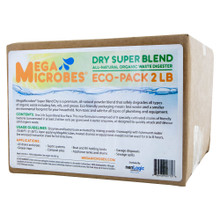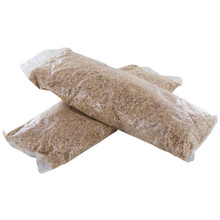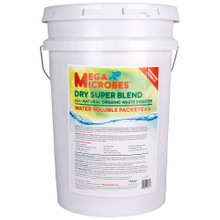 Loading... Please wait...
Loading... Please wait...- (864) 558-5732
- Home
- My Account
- View Cart
Categories
Multi-Occupant & High Rise
FACILITY MANAGERS: Slash Reduce or Eliminate Plumbing Costs with the Power of Nature
A regular biomaintenance program can significantly reduce costs associated with plumbing and jetting services.
A common challenge for multi-story buildings is the frequency of plumbing repairs needed to keep waste water flowing freely out through drains, pipes, and outflow stacks. This problem can be especially acute in residential buildings where fats, oil and grease from in-home cooking accumulate all the way from kitchen drain traps to the common drains at ground level.
Additional deposits of soap, hair, and other waste residue from bathroom showers, tubs, sinks and toilets add to the ongoing problem. Typically, this issue is dealt with as a maintenance budget line item for both plumber snaking at the unit level and the much more expensive jetting service applied to the inside of the common vertical outflow pipes, known as stacks. The annual cost for these services can easily top $10,000 or more, even in a modest-sized building with less than 100 units.
READ CASE STUDY OF HOW ONE CONDOMINIUM REDUCED THEIR MAINTENANCE COSTS BY THAN $14,000 PER YEAR WITH MEGAMICROBES.
Many property managers and homeowner associations have discovered that regular application of biological cleaners, such as MegaMicrobes®, provide significant cost savings. In addition, this method is completely non-toxic and harmless to any type of piping material. It is not only considered safe, but also beneficial to the local environment by reducing the amount of sludge put into municipal sewer systems. This type of treatment, known as “bioremediation,” works for towering office buildings as well as 2-4 story condo apartments. Recently, we learned of how one large residential community has realized savings of more than $14,000 a year.
BUT THERE'S A BETTER WAY!
To understand the benefits of using a biological cleaner, it helps to understand how multi-floor plumbing systems work. Typically, waste water (and "gray water") flow out of the building through a common top-vented vertical pipe known as a stack or soil-stack. Between the stack and each unit are "tributary" pipes flowing from fixtures (toilets, sinks, etc.) These lateral pipes contain a dipped section that acts as a trap with sitting water that acts as a barrier to sewage gases coming into the fixtures; in most cases it is required that there is also a small venting release close to the fixture, usually inside the wall. The main venting of gases occurs at the top of the stack, generally located on the roof of a building. This same vent is intended to help maintain neutral pressure throughout the building and also allow aerobic bacteria to aid in sewage "digestion."
At the bottom of the stack is the main drain which carries the waste water into a pipe running to the municipal sewage system.
 A BRIEF PLUMBING PRIMER
A BRIEF PLUMBING PRIMER
To understand the benefits of using a biological cleaner, it helps to understand how multi-floor plumbing systems work. Typically, waste water from both drains (grey water) and toilets (black water) flows out of the building through common top-vented vertical pipes known as stacks, or soil-stacks. Between the stack and each residential or office unit are “tributary” pipes flowing from fixtures (toilets, sinks, etc.) These lateral pipes contain a dipped section holding sitting water that acts as a barrier to sewage gases coming into the fixtures; in most cases it is required that there is also a small venting release close to the fixture, usually inside the wall. The main venting of gases occurs at the top of the stack, generally located on the roof of the building. This same vent is intended to help maintain neutral pressure throughout the building and also allow aerobic bacteria to aid in sewage “digestion.” At the bottom of the stack is the main drain which carries the waste water into a pipe running to the municipal sewage system.
SIGNS OF TROUBLE
While a major sewage stoppage affecting all tenants will get everyone’s attention, early trouble signs include widespread slow drainage and foul odors. The typical prescription is to “clean the stack (or stacks)” which involves running a cable from the top of the stack to open up the drain at the bottom (similar to “snaking” a drain). Many cleaning services also provide high-pressure jetting to clear blockages inside the stacks, and may even use remote cameras to locate these blockages. Expensive! In severe cases of “hard” physical blockages jetting may be called for, as every property manager knows, this is a very costly service, and as a rule it does not solve the problem of on-going waste accumulations, which is why jetting often becomes a routine procedure.
RISKS OF JETTING
In addition to being expensive and not treating the cause of the problem, jetting poses a very real risk of damage to pipe-joints and valves from the high pressure being applied. Waste can also end up being pushed back into lateral lines, which is the last place you want it
BIOMAINTENANCE TREATS THE CAUSE, NOT JUST THE SYMPTOM
Regular application of a high-quality, effective biological product like MegaMicrobes® can be easily and safely applied by maintenance staff or even the residents themselves. With a strong initial treatment followed by monthly or bi-weekly use of the bio-additive at the drain level of the building, natural enzymes and bacteria will go to work keeping sludge buildup to a minimum at the primary point where blockage occurs. Friendly bacteria will also eat its way into the sewage connecting pipes, providing a cleaner pathway away from the building. To supplement treatments at the ground floor, individual fixtures can also be treated where there are problems and as part of an overall “healthy” pipes program. This has been shown to dramatically reduce the need for expensive plumber visits.
REQUEST INFORMATION ON BULK PRICING
RECOMMENDED TREATMENT
Please note that each building may have a different situation requiring some experimentation with dosage amounts and frequency. Remember that MegaMicrobes products are completely non-toxic and harmless to any type of piping material, so greater concentrations will have no adverse effect. Furthermore, the products are very economical - even more so when purchased in the bulk size, such as the 25-pound bucket or case lot.
1. Assess your situation: a complete blockage will first require some type of physical opening of the drain pipe. Bio-additives are true cleaning agents, but they can't deliver brute-force opening when the pipe is blocked by a non-organic object or organic waste has become so large and compacted that there is no flow of water.
2. Begin remedial treatment: Sometimes called "shock treatment," the initial phase of bio-additive application calls for greater dosing with more frequency. You will want to apply the treatment to all drains and toilets on the first floor, and/ or basement if there is one, over 5-7 days. As little as a tablespoon in a pint of room temperature water per drain can be effective; a good guideline will be one tablespoon for every inch of drain width. You will also want to add a cup of powder close to the main drain to get into the sewer connection line. A guideline here will be a one cup in a pint for every 100 feet of sewer line. (This is the approximate length of the line from your building to the main sewer system, typically about the distance to the main road.)
If the problem is especially severe, continue the program for another week or so. After that time, a weekly, bi-weekly, or even monthly application should be instituted, based on the size of the property, water usage, and special situations such as common kitchens or high levels of grease discharge.
3. Important Considerations: Treatments should take place at times of minimal water usage over 6-8 hours to give the friendly bacteria time to take hold and do its work. In an office building this will generally be overnight, but residential properties will have to look for the best times based on their tenants' lifestyles. It would be a good idea to enlist the support of residents in determining the times and also to keep their usage down during these times.
4. Application on upper floors: The drains on upper floors do not necessarily require the same level of frequency and dosage initially as the ground floors. Exceptions to this would be where individual units are experiencing very slow drainage and/ or odors. In any case, monthly treatments are a good idea for all drains throughout the building.
Tenants or residents should be encouraged to support ongoing plumbing "health" of their property:
- Minimize or avoid use of garbage disposals - better to put chunks of food in regular trash for landfill or a common compost collection
- Use only biodegradable soaps and detergents that do not inhibit bacterial digestion of waste. (Avoid "antibacterial" detergent - they do more harm than good and have not been shown to prevent colds!)
- Use effective, economical bioadditives such as MegaMicrobes Dry (suggestion - purchase discounted case lots of our 2-pound jars that include a measuring scoop and distribute to each unit)
New Products
-
$39.95
-
$49.00
-
$299.00
-
$311.00
-
$159.00$129.00







